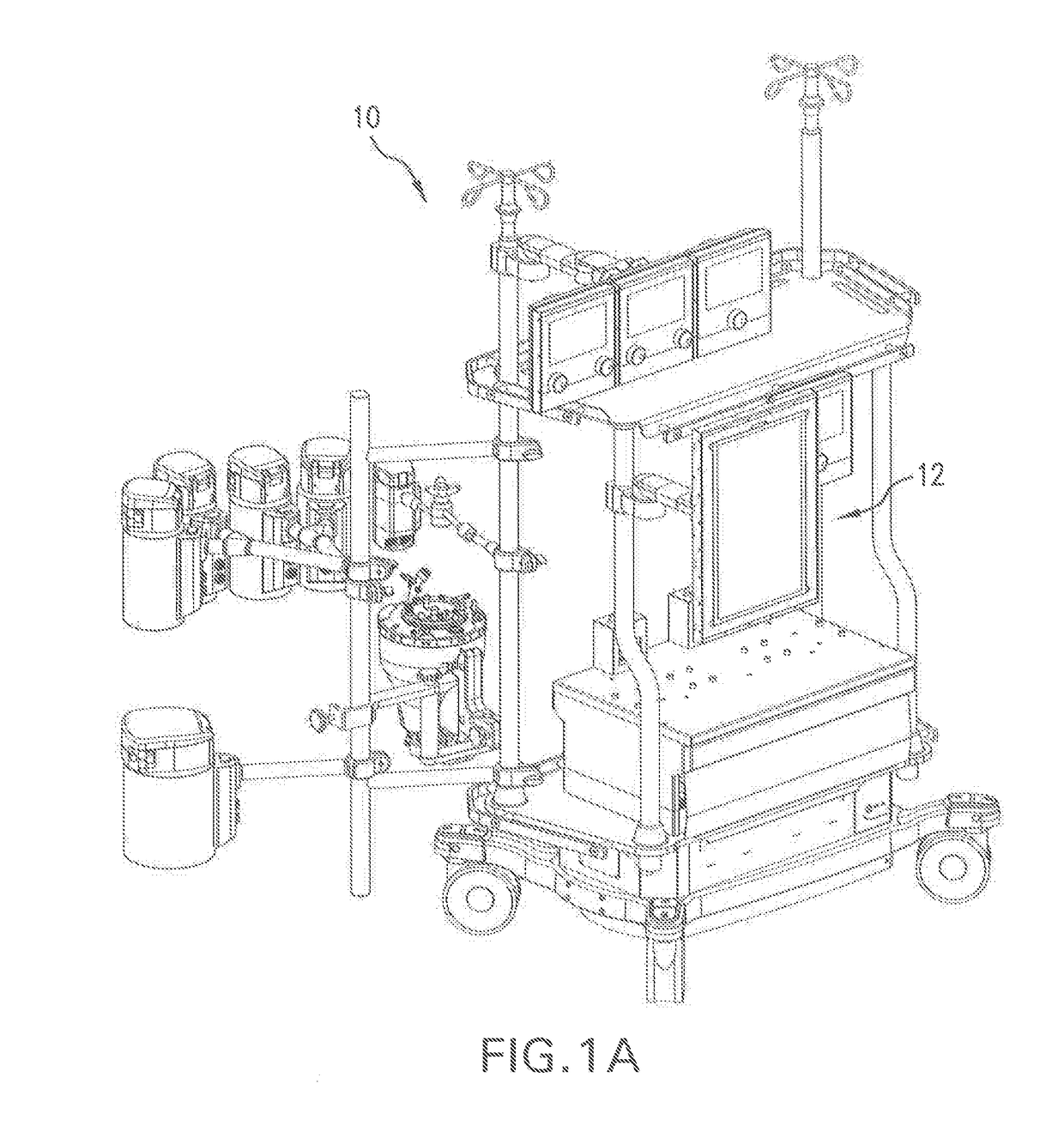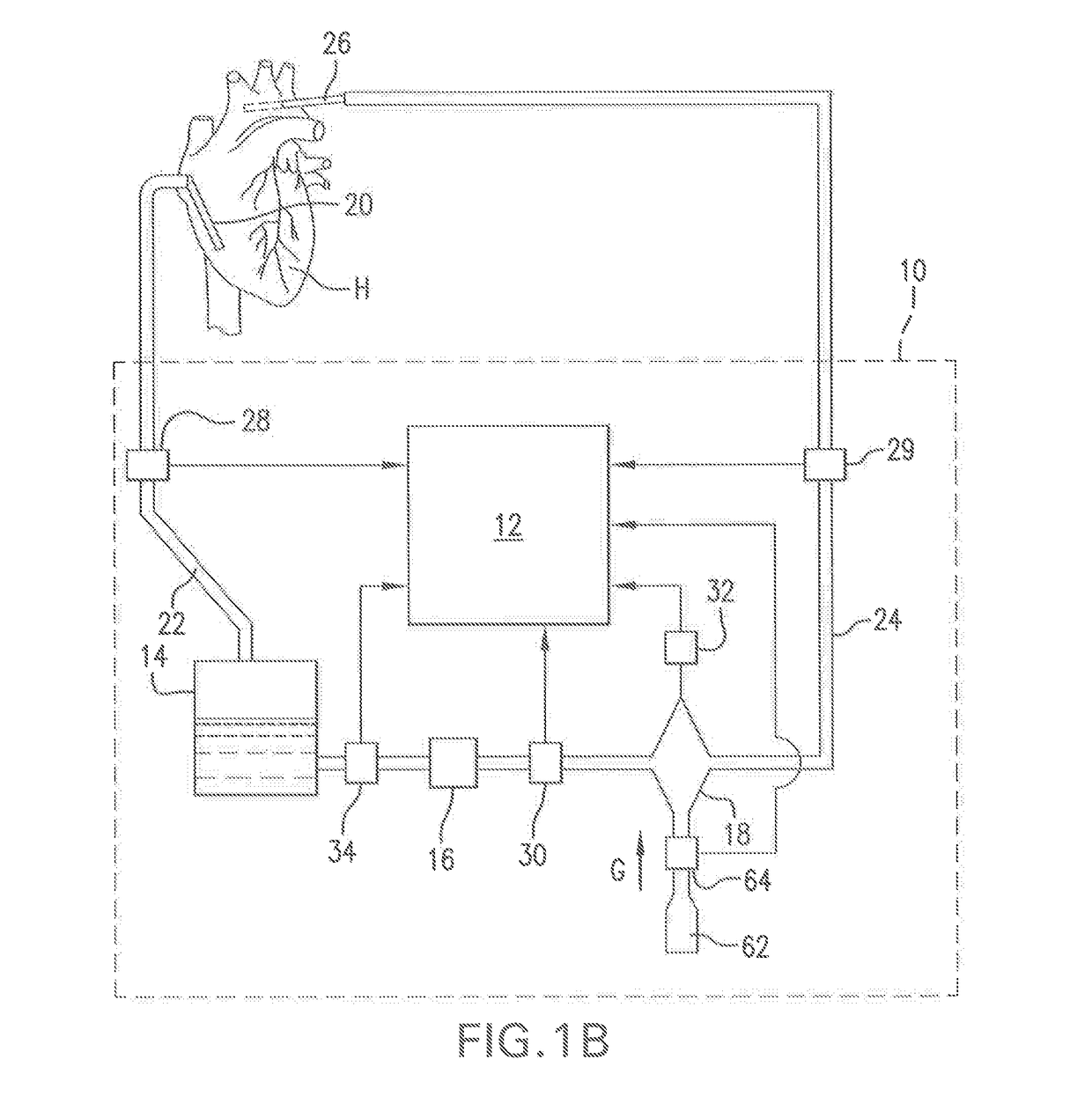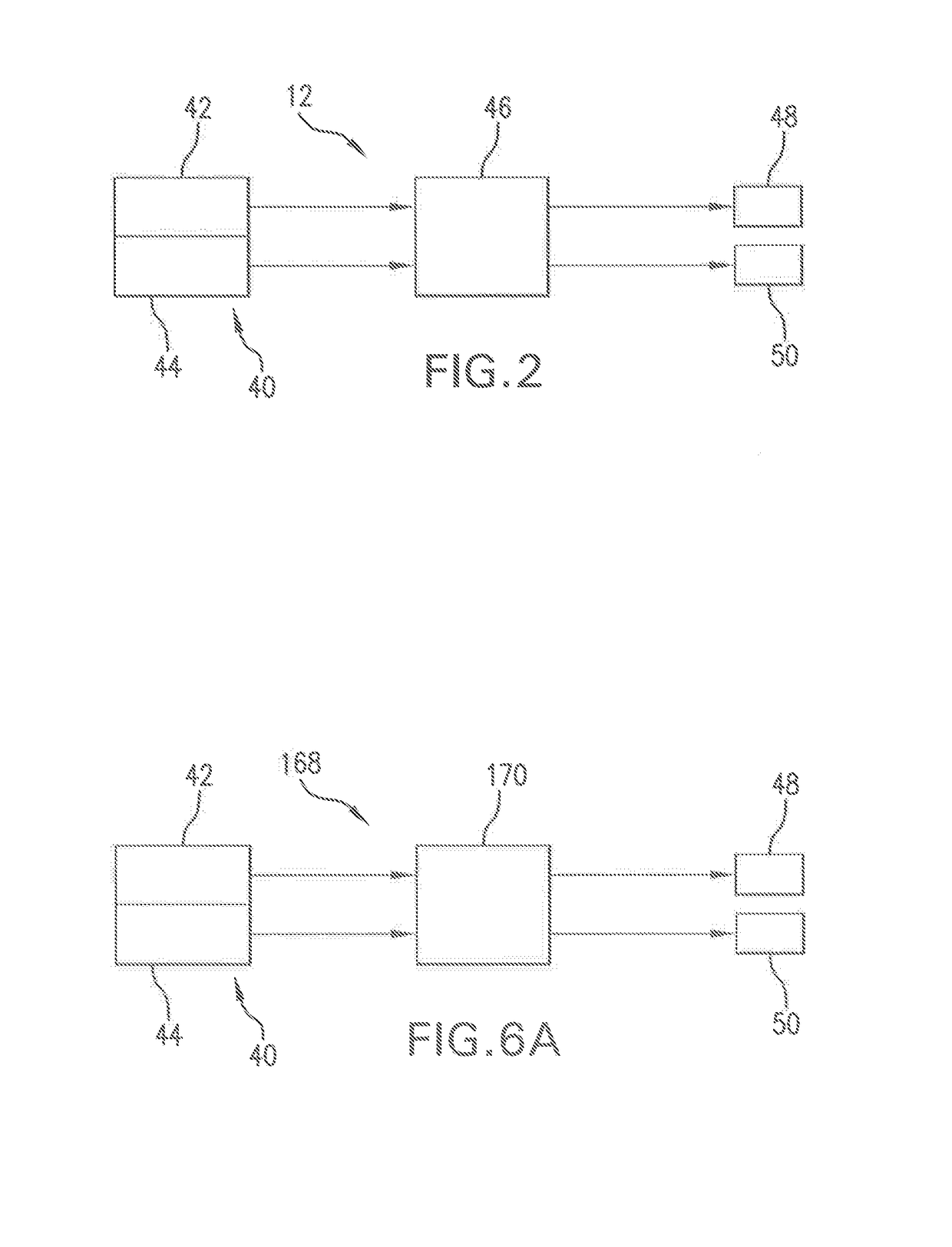A clinical parameter calculation-simulation-monitoring system
a clinical parameter and simulation technology, applied in the field of patient monitoring systems, can solve problems such as tissue hypoxia, insufficient oxygen delivery, and increased morbidity and mortality
- Summary
- Abstract
- Description
- Claims
- Application Information
AI Technical Summary
Benefits of technology
Problems solved by technology
Method used
Image
Examples
embodiment (
Method Embodiment(s)
[0116]In accordance with a first non-limiting method embodiments a calculation-simulation-monitoring method is provided for calculating, simulating and / or monitoring oxygen delivery, or oxygen consumption, or oxygen delivery and oxygen consumption, for a patient, wherein the method includes the steps oil (a) inputting data via an interface configured to receive data input, wherein the inputted data pertains to one or more input parameters selected from the group consisting of patient input parameters, perfusion input parameters, oxygen delivery input parameters, oxygen consumption input parameters, and carbon dioxide production input parameters; (b) calculating one or more output values based on the one or more input parameters using a processor operably connected to receive data signals from the interface corresponding to the one or more input parameters, wherein the one or more output values are selected from the group consisting of one or more patient morpholo...
PUM
 Login to View More
Login to View More Abstract
Description
Claims
Application Information
 Login to View More
Login to View More - R&D
- Intellectual Property
- Life Sciences
- Materials
- Tech Scout
- Unparalleled Data Quality
- Higher Quality Content
- 60% Fewer Hallucinations
Browse by: Latest US Patents, China's latest patents, Technical Efficacy Thesaurus, Application Domain, Technology Topic, Popular Technical Reports.
© 2025 PatSnap. All rights reserved.Legal|Privacy policy|Modern Slavery Act Transparency Statement|Sitemap|About US| Contact US: help@patsnap.com



